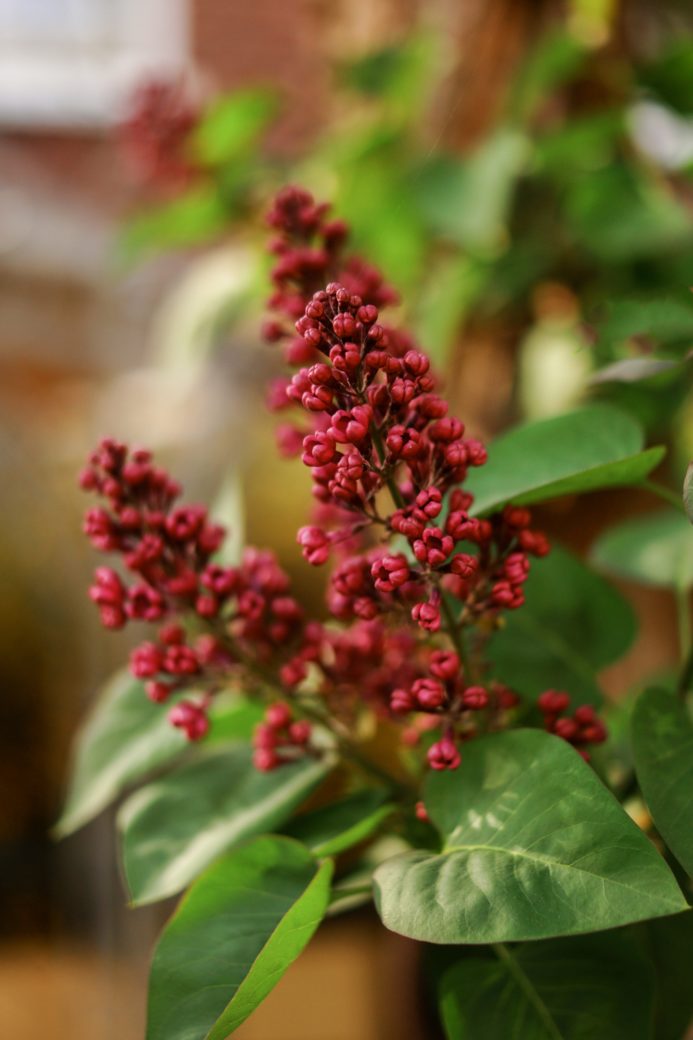Have you ever come across a deep red, tangy spice that adds a unique flavor to dishes without overpowering them? Introducing sumac, an ancient and versatile spice that has been widely used in Middle Eastern and Mediterranean cuisine. Its versatility ranges from refreshing beverages to meat tenderizers, making it a valuable addition to any kitchen. Get ready to unlock the secrets of sumac and explore new ways to enhance your culinary creations!
Table of Contents
Short Summary
Unlock the secrets of sumac with tips and recipes for cooking in 2023.
Distinguish edible from poisonous varieties by looking out for deep red berries.
Sumac adds a unique, tart flavor to dishes, try it at home in Middle Eastern favorites or get creative!
Exploring the Sumac Plant

Sumac is a wild plant that belongs to the cashew family, with over 150 varieties of sumac plants found across the Mediterranean basin and North America, such as staghorn sumac, Sicilian sumac, and littleleaf sumac. This ancient spice has been used for thousands of years in both Levantine and Native American cuisines, with smooth sumac being one of the varieties commonly used for cooking.
The fragrant sumac plant produces clusters of red berries, which are the key ingredient for sumac spice, imparting its characteristic tart flavor and deep red hue to various dishes.
Edible vs. Poisonous Varieties
While numerous sumac species are edible and widely used in cooking, it’s important to distinguish them from poisonous varieties like poison ivy and poison sumac, which contain the toxin urushiol. Contact with these poisonous sumacs can cause an itchy red rash. To differentiate between edible and poisonous sumacs, pay attention to the color of their berries. Edible sumacs, such as staghorn sumac and shining sumac, display deep red berries, whereas poisonous sumac has white berries.
By focusing on the vibrant red berries of edible sumacs, you can safely enjoy the unique and tangy flavor that sumac spice brings to various dishes.
So, now that we’ve identified the right sumac berries to use, let’s dive into the world of sumac’s flavor profile and how it can transform your cooking!
Sumac Berries: The Key Ingredient
The red berries of edible sumacs are used to make sumac spice, either as ground or whole spice. These pea-sized berries grow in bright-red clusters at the end of the branches, creating an enticing visual appeal. When ground into a coarse powder, sumac spice exhibits a deep red color and imparts a citrusy flavor to dishes. Whole sumac berries, although less common, offer a more intense flavor experience and can be used as a garnish or infused in liquids for added taste.
Whether you choose ground or whole sumac, this versatile spice adds a unique and tart element to your culinary creations. Now that we’ve explored sumac’s origin and flavor, let’s discover how to incorporate it into various dishes.
The Flavor Profile of Sumac
Sumac is known for its distinctive tart flavor, which pairs well with a wide range of ingredients in Middle Eastern and Mediterranean cooking. This versatile spice can be found as ground or whole, offering flexibility in how it’s used in recipes.
Whether you’re sprinkling sumac on salads or blending it into a meat rub, its tangy and earthy-sweet taste with a hint of floral citrus notes is sure to add a unique dimension to your dishes.
Sumac Spice: Ground or Whole
Ground sumac is the most common form found in stores, and it’s made by grinding dried berries into a fine powder. This deep red spice offers a tangy, lemony flavor that can easily be incorporated into various recipes. On the other hand, whole sumac berries are rarer but provide a more intense flavor experience. These dried berries can be used as a visually appealing garnish or infused into liquids to extract their unique taste.
Both ground spice and whole sumac spice forms offer distinct advantages, allowing you to experiment with different recipes and flavor combinations. No matter which form you choose, sumac’s unique flavor profile will elevate your culinary creations.
Pairing Sumac with Other Ingredients
Sumac’s versatility shines when it comes to pairing with other ingredients. Its ability to enhance flavors without overpowering the dish makes it a popular choice in many recipes. Sumac pairs well with ingredients like rice pilaf, fatoosh salad, tabbouleh salad, thyme, oregano, mint, and sage. Additionally, the acidity of sumac helps brighten and balance the taste of various dishes, making it the perfect addition to your spice cabinet.
With its unique flavor profile and compatibility with a wide range of ingredients, sumac is an ideal spice to use for elevating the taste of your favorite dishes. Now that we’ve learned about sumac’s flavor and pairing potential, let’s explore some creative ways to cook with this versatile spice.
Cooking with Sumac: A Versatile Spice

Sumac’s versatility extends beyond its pairing potential, as it can be used in a variety of culinary applications. Whether you’re making a refreshing sumac ade or using it as a meat tenderizer, sumac offers endless possibilities for transforming your dishes.
From traditional Middle Eastern favorites to creative new recipes, sumac is a must-have ingredient for any adventurous home cook.
Sumac Ade: A Refreshing Beverage
Sumac ade is a unique and refreshing drink made by soaking sumac berries in cool water, straining the liquid, and adding a sweetener of your choice. This natural alternative to lemonade, with a taste reminiscent of fresh lemon juice, provides a delightful flavor experience thanks to the acid on the hairs of sumac berries.
Perfect for hot summer days or as a thirst-quenching accompaniment to your favorite meals, sumac ade is a flavorful and creative way to enjoy the benefits of sumac. Give it a try and discover a new favorite beverage that will leave you wanting more.
Using Sumac as a Meat Tenderizer
Sumac’s acidity makes it an effective meat tenderizer, adding tanginess to dishes without extra liquid. Sprinkling sumac on top of meat before grilling or roasting helps break down the fat, resulting in tender and flavorful dishes. Additionally, sumac can be used instead of lemon juice or vinegar in marinades to give an extra tenderizing boost.
Experiment with sumac as a meat tenderizer in dishes like sumac-spiced lamb kebabs, sumac-roasted chicken, and sumac-marinated steak. With its unique flavor and tenderizing properties, sumac is an excellent addition to your meat-centric recipes.
Substituting Sumac: Alternatives and Tips
In situations where sumac is unavailable or you’re looking for a slightly different flavor profile, substitutes like lemon zest, vinegar, tamarind, and kosher salt can be used. For visual effect, paprika can be used to mimic sumac’s appearance in recipes.
However, it’s important to use substitutes sparingly to achieve a similar flavor without overpowering the dish.
When to Use Substitutes
Substitutes should be used when you’re unable to find sumac or want to achieve a slightly different flavor profile in your dish. When using a substitute, start with a small amount and adjust to taste, ensuring you get the exact flavor you’re looking for without overpowering the dish. Taste as you go and adjust the seasoning accordingly to achieve the desired balance of flavors.
Whether you’re using lemon zest, vinegar, tamarind, or kosher salt, remember that balance is key when substituting for sumac. By using substitutes sparingly and adjusting to taste, you can achieve a similar flavor experience while exploring new flavor combinations.
Visual Substitutes: Paprika and More
For recipes that call for sumac’s vibrant red hue, visually similar spices like paprika, lemon zest, ground coriander, and za’atar can be used as substitutes. These visual substitutes not only mimic sumac’s appearance, but also add their own unique flavor to dishes, allowing for creative experimentation in the kitchen.
When using visual substitutes, it’s essential to adjust the amount to match the sumac quantity the recipe calls for. This way, you can maintain the visual appeal of the dish while also achieving a balanced flavor profile.
Storing and Buying Sumac
When purchasing sumac, look for products without additives like citric acid and food coloring to ensure the best flavor and quality. Sumac can be found online or in Middle Eastern stores, and proper storage is crucial for maintaining its freshness and potency. By storing sumac correctly and choosing high-quality products, you can enjoy its unique flavor in various dishes for an extended period.
Avoiding Additives: Citric Acid and Food Coloring
To enjoy the authentic flavor of sumac, opt for products without additives like citric acid and food coloring. These additives can alter the natural flavor and quality of sumac, so it’s best to choose pure sumac products for the best culinary experience.
Sumac is a versatile spice that can be used in a variety of dishes, from salads to those that benefit from the unique taste of sumac.
Shelf Life and Storage Tips
Proper storage is essential to maintain sumac’s freshness and potency. Store sumac in an airtight container away from light and heat to preserve its natural flavors and vibrant color. When stored correctly, sumac can last up to a year, allowing you to enjoy its unique taste in various recipes throughout the year.
By storing sumac properly and choosing high-quality products without additives, you can relish the authentic flavor of this versatile spice and elevate your dishes to new heights.
Sumac Recipes to Try at Home
With its unique flavor and versatility, sumac is an exciting spice to experiment with in various recipes. From traditional Middle Eastern favorites like Fattoush Salad, Hummus with Sumac, and Grilled meats with Sumac seasoning, to creative new dishes like Sumac Ade and sumac-marinated steak, there’s no shortage of delicious ways to incorporate sumac into your cooking repertoire.
Try adding a sprinkle of sumac to your favorite dishes for a unique flavor and a hint of salt.
Middle Eastern Favorites
Incorporate sumac into traditional Middle Eastern dishes for an authentic flavor experience. Try adding sumac to recipes like Fattoush Salad, Hummus with Sumac, Grilled meats with Sumac seasoning, Baba Ganoush with Sumac, and Eton Mess with Sumac. The tangy, earthy-sweet taste of sumac adds a unique dimension to these classic recipes, elevating their flavor and making them a hit with family and friends.
Explore the world of Middle Eastern cuisine with sumac as a key ingredient, and delight your taste buds with the unique and tangy flavor of this ancient spice.
Creative Uses for Sumac
Don’t be afraid to get creative with sumac in your cooking! Experiment with sumac as a Mediterranean dish topper, popcorn duster, or mix it with olive oil for a delicious bread-dipping oil. You can also try incorporating sumac into desserts, such as sweet-and-sour candied fruit, by tossing candied pomelo rind in a mix of sumac and sugar.
With its distinctive flavor and versatility, sumac offers endless possibilities for transforming your dishes and expanding your culinary horizons. Embrace your creativity and discover new ways to use this ancient spice in your kitchen.
Learn more, visit 20 Best Sumac Recipes (How To Cook With Sumac).
Summary
In conclusion, sumac is a unique and versatile spice that can elevate your culinary creations with its tangy, earthy-sweet flavor. From traditional Middle Eastern favorites to creative new recipes, sumac offers endless possibilities for transforming your dishes. By choosing high-quality sumac products without additives and storing them properly, you can enjoy the authentic flavor of this ancient spice for an extended period. So why not give sumac a try in your kitchen and discover a new world of flavor?
Frequently Asked Questions
Why do people eat sumac?
People enjoy sumac because it adds a tart flavor and bright red color to Middle Eastern, Mediterranean, and other cuisines. In the Middle East, it’s used as a topping for fattoush salads and sprinkled over hummus, while in the US it’s sometimes used to make red lemonade.
Sumac has a citrus-like fragrance and a unique flavor that is similar to lemon juice.
What is a substitute for sumac spice?
If you don’t have sumac, a great substitute is tamarind, which has a unique blend of tartness, sweetness and sourness that makes it an ideal replacement.
You could also use ground coriander, dried thyme and oregano, lemon zest, sorrel, vinegar, or Za’atar for similar flavor profiles. Experiment to find the best substitution for your dish.
Is sumac poisonous to humans?
Poison sumac is a woody shrub with toxic resin that can cause an irritating skin rash when touched. Symptoms of a poison sumac rash appear 8–48 hours after exposure and can last for weeks, so it is important to avoid contact with the plant.
Staghorn and smooth sumac species, however, are not poisonous to humans.
What does sumac taste like?
Sumac has a tart, lemony, tangy flavour with a hint of vinegar, making it an ideal flavouring before the Romans introduced lemons.
It is used in Middle Eastern and Mediterranean cuisines, as well as in some Latin American dishes. Sumac is also used as a garnish, sprinkled over salads, meats, and vegetables. It can also be used to make a video.
How can I tell the difference between edible and poisonous sumac?
To tell the difference, look for deep red berries on edible sumac and white berries on poisonous sumac.









